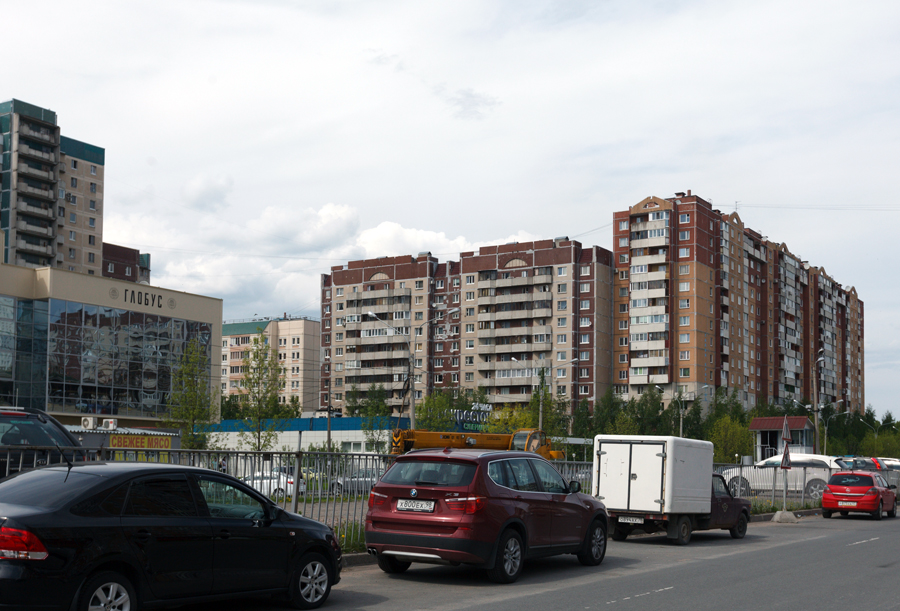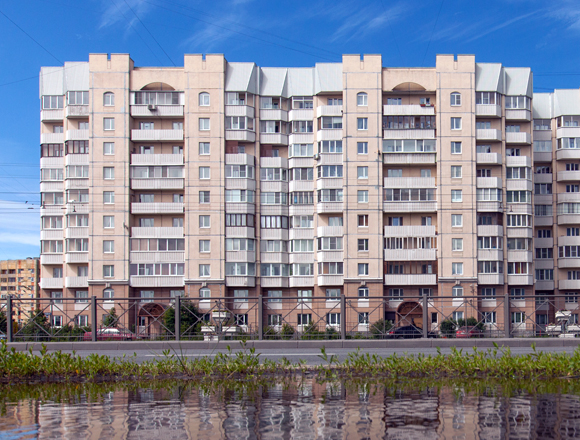Philipp Meuser: It’s important to separate technologies from architecture

Philipp Meuser, German architect, researcher, head of a publishing company, worked on the modernization of house-building factories as part of ARCHITECTURAL POLICY, the main project of Arch Moscow, in cooperation with a team of Moskomarkhitektura (Committee for Architecture and Urban Planning of Moscow). The ArchCouncil of Moscow portal asked Mr. Meuser to comment on his ideas.
Large-panel system building has become the main technology in mass housing in the majority of Russian cities over the last half century. However, despite the fact that this phenomenon has become widespread, for a layman it’s difficult to understand in what way new generation panel buildings differ from the old ones, and what innovations have taken place in construction industry. Philipp Meuser has spent many years studying the Soviet panel housing technologies and he is well-informed about the current modernization of house-building factories, which he is going to tell us about using five simple analogy examples.

First of all, Philipp Meuser identified five generations of panel system buildings that were constructed in the period from 1954 to 2015. He presented the first generation series in the form of chess: architects designed residential houses or straight sections as a unit. Until 1962, construction of residential buildings consisting of 3-5 such sections was very common.
The second generation apartment blocks look like dominoes. House-building factories applied the innovative technology to produce corner sections which provided effectiveness of such buildings in adjusting flexibly to the sites with complex relief.
Philipp Meuser: ‘The smallest unit in construction like this is a section. You can use the sections to create different shapes — zigzags, serpentine chains, etc.’
Later, this method was actively applied to form perimeter constructions, which allowed for efficient land use.

The third generation resembles Tetris: designers tried to use the apartment size as a unit and assembled sections of apartments to get improved apartment layouts in each section. Section shapes created more complex contours of the building, but such apartment layout seemed very effective as it satisfied different requirements of citizens.
The fourth generation series belong to post-Soviet times. Philipp Meuser called them Lego. Different section shapes were available: from radial to corner and angled sections. Until recently, this type of construction has been the most widespread. A whole set of different sections was formed to fit sites of any level of complexity and create interesting urban layout. Sometimes designers tried to create some artistic elements, when arranging sections with different layouts on the site, as a result, a lot of geometric architectural “patterns” appeared on the map of Moscow and can be clearly seen from a satellite.
Philipp Meuser: ‘In this case, the panel itself serves as a unit. That is, we go from the whole building as a unit in the first generation series, then to the section in the second one, then to the apartment and finally to the wall, in other words, from bigger construction elements to smaller ones...’

‘The first three generations are very technical with no possibility to vary layouts, but after the collapse of the USSR, building construction became more individually-oriented, because real estate market emerged and other demand was formed...’
The fifth generation is presented in the form of puzzles. The new generation sections are manufactured on the basis of modernized technologies; this modernization project was launched under the order of Moscow Mayor Sergei Sobyanin. New sections are like erector set elements, which can be assembled to make houses that are perfect in terms of their planning, facade solutions, number of floors, and shapes.

Philipp Meuser: ‘We have a box of Lego parts, which can be connected with each other and create a huge number of options to satisfy the market needs. Standardization is abandoned: you create an individual project, and then house-building factories divide it into sections, which are brought to the site, where the final structure is assembled.’

‘Starting from the fourth generation, it was possible to create individual planning of apartments; as far as the fifth generation is concerned, there are not any standards. This new generation construction has become a serious competitor to brick building and monolithic houses ...’
At the same time, Philipp Meuser puts the emphasis on the fact that the new system technologies have nothing in common with urban design: the fifth generation houses might look both interesting and in some cases boring — everything depends on the architect’s expertise rather than the technology.
‘Burov’s Tracery Housewas built in 1941; and it belongs to the first generation. Nevertheless, today we may say it is not out-of-date. Type of technology and the final appearance of a building are not linked; the key factor is mostly the work of the architect ...’

The fifth-generation technology gives wide opportunities to make high-quality architecture; and, according to Philipp Meuser, Moscow developers should above all decrease the number of floors — which is the factor that determines the quality of the living environment.
‘If you compare a panel of new buildings in Moscow with a building panel in California, you’ll see they are made according to the same design philosophy. Except for the fact that you’ll have to cut a piece with a height of 5-7 storeys out of a 22-storey Moscow apartment building ... The quality of the projects in this case is determined by their scales rather than the presence of panels. Houses in Moscow are too high. Here you have four times as many people, cars, and waste. Saying this I mean that the difference is in scale, but not in the technology ...’
The architect believes that it’s necessary to separate technologies and engineering solutions from architecture and design. In any case, despite the fact that the first three generations have become outdated, any of them have some examples of high quality and interesting architecture.




